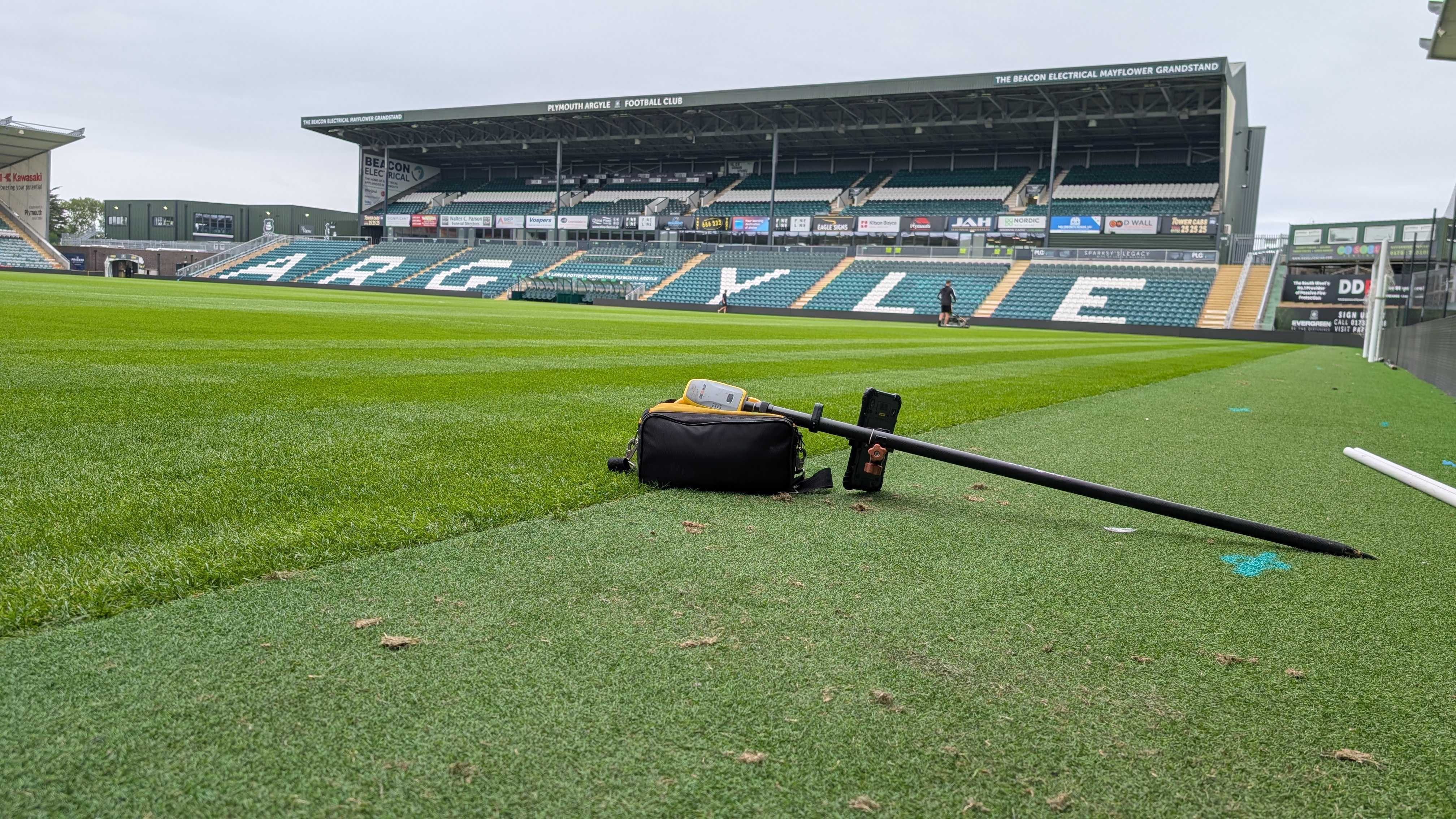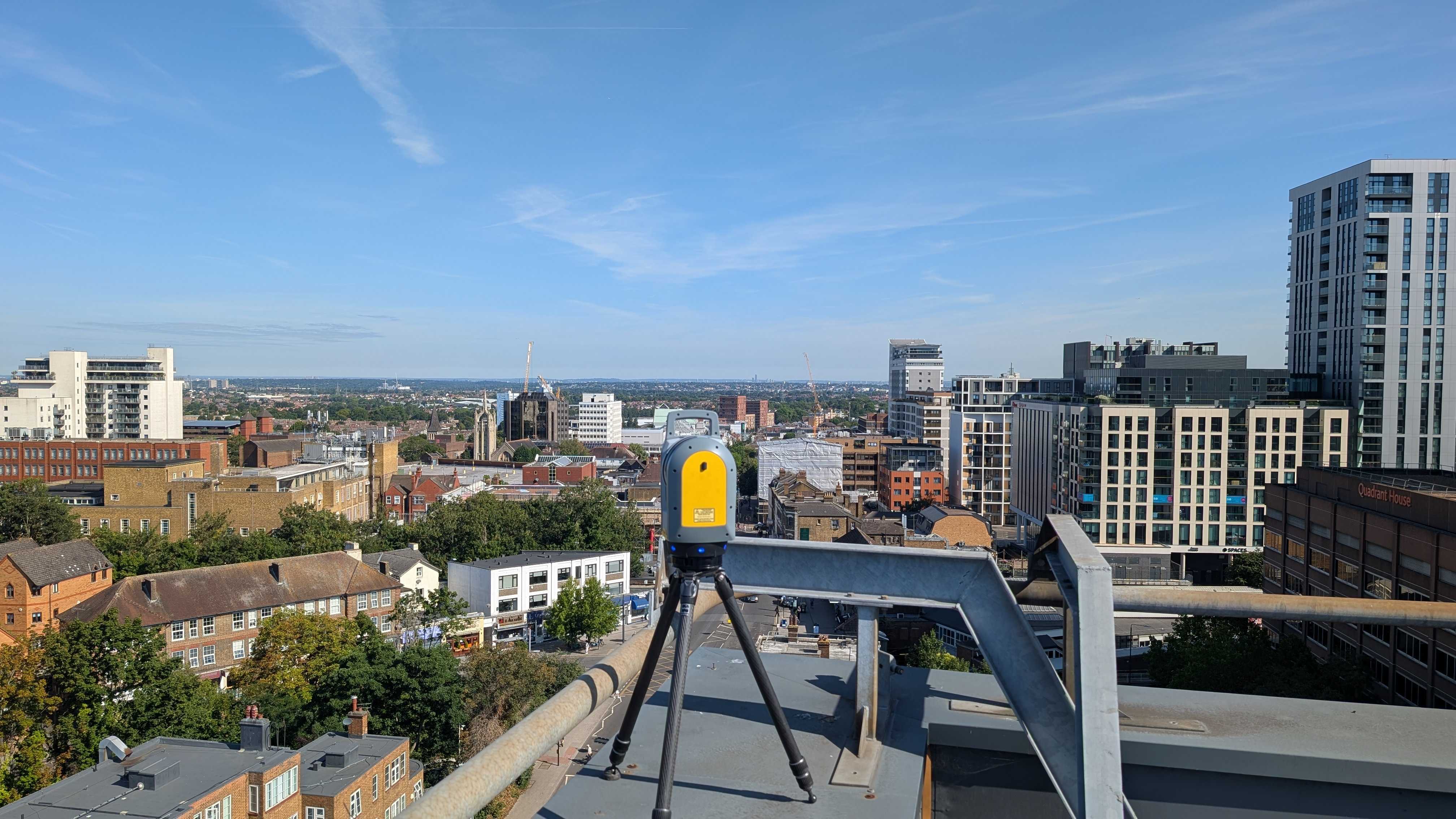Welcome to Intersect Surveys’ pillar post, where we delve into surveying, from the technical details of how they work to the best ways to use them to better your next project.
Whether you’re looking to improve efficiency of your next project, or simply want to learn more about utility and GPR surveying, this guide can provide you with all the information you need.
GPR surveys have emerged as a popular choice for construction managers looking to ensure safety and efficiency of their projects. This method involves electromagnetic waves being sent into the ground and measures the reflected signal, that indicates a foreign material. These surveys are non-destructive and provide crucial information on buried utilities, geological features, and possible obstacles before a project starts. Using a PAS128 survey, one that is carried out using the methodology from this standard, is also a requirement for most projects.
In this guide we cover all the information you need to know about surveying, and offer top tips on related considerations, to ensure you are informed on everything utility related. We aim to cover a wide range of topics, from diving deeper in GPR surveys, to discussing how utility surveys benefit different types of projects.
Here is the chapter layout:
- What is a GPR Survey? – Join us as we dive deeper in the uses and concepts of GPR surveys.
- What is Underground Utility Mapping? - Learn about the process of mapping underground utilities and its importance in construction and planning.
- How Utility Surveys Can Save Your Business Time and Money - Discover how conducting utility surveys can be cost-effective and efficient for your business.
- Why Every Construction Project Needs a Utility Surveyor - Understand the crucial role utility surveyors play in construction projects.
- The Benefits of Ground Penetrating Radar Surveys for Property Owners - Explore how property owners can benefit from GPR surveys to assess their land.
- Utility Surveys for Homeowners: Protecting Your Property from Hidden Dangers - Find out how homeowners can use utility surveys to safeguard their properties.
- A Deep Dive Into Surveys: Ground Penetrating Radar And Topographical Surveying Methods - This blog will provide an in-depth exploration of two surveying methods, Ground Penetrating Radar (GPR) and topographical surveying, detailing their principles, applications, and differences.
- The Advantages of Combining Utility Surveys and GPR Surveys - Discover the enhanced benefits of integrating utility surveys with GPR technology.
- Why Underground Utility Surveys are Essential for Public Safety - Explore why public safety relies on comprehensive underground utility surveys.
- How Infrastructure Surveys Can Help Mitigate Risks During Construction Projects - Understand how infrastructure surveys contribute to risk management in construction.
- GPR Surveying for Environmental Assessments: A Non-Invasive Approach - Learn about the non-invasive application of GPR surveys in environmental assessments.
What is a GPR Survey
Before construction commences, a thorough assessment of the project site is essential to prevent costly mistakes and safety hazards.
Ground Penetrating Radar (GPR) surveys have emerged as a popular method in recent years, utilising specialised equipment to emit electromagnetic waves into the ground and analyse the reflected signals.
It generates visual images that map subsurface discrepancies, allowing for the identification of underground utilities, pipes, voids, and other potential obstructions.
While GPR surveys find applications in diverse fields, utility work, and construction companies heavily rely on their findings. By employing GPR surveys, you can:
- Save Time:
GPR's ability to detect potential issues on-site allows for immediate resolution, eliminating the need for labour-intensive and time-consuming traditional methods like manual digging or probing.
- Save Money:
GPR surveys help cut costs by reducing the necessity for expensive exploratory digging. They accurately identify subsurface utilities, facilitating quicker decision-making on project design and layout adjustments.
- Improve Safety:
GPR surveys enhance safety by uncovering underlying issues that could pose risks to both the construction team and the public. Designing projects around existing subsurface features minimises the potential for injuries and utility-related incidents, enhancing overall safety.
Given its non-destructive nature and ability to offer comprehensive subsurface information, GPR has become indispensable in the construction industry.
What Is Underground Utility Mapping?
Underneath the bustling streets lies a critical web of infrastructure, including water mains, electrical cables, gas lines, and telecommunications, vital for urban and rural communities.
However, their concealed nature poses risks of accidental damage during construction, leading to disruptions, expensive repairs, and safety hazards.
Underground utility mapping finds application in various sectors, preventing unexpected expenses, delays, and injuries. The process of utility mapping includes gathering existing utility records, on-site investigations using methods like Ground Penetrating Radar (GPR), marking the ground to indicate utility presence, and the integration of collected data into a comprehensive map or 3D model. It benefits:
Construction and Engineering Projects: By identifying the location and depth of underground utilities, it aids in construction and engineering projects.
Urban Planning and Development: City planners and developers use utility mapping data when designing new developments and public spaces.
Infrastructure Maintenance and Management: Utility mapping supports ongoing infrastructure maintenance and management.
Public Works Projects: Government agencies rely on utility mapping to prevent damage to existing utilities during public works projects.
Real Estate Development: Property developers use utility mapping to assess the feasibility of development sites.
Telecommunication and Broadband Network Planning: Telecommunication companies employ utility mapping to plan and expand their network infrastructure seamlessly.
How Utility Surveys Can Save Your Business Time And Money
By utilising surveying techniques such as Ground Penetrating Radar (GPR) and utility mapping, businesses can not only save time, but also improve safety and reduce costs, ultimately enhancing the overall success of their projects.
This critical information enables construction teams to make informed decisions throughout a project's lifecycle, whether it involves installing new infrastructure or renovating existing structures.
Here are 3 ways utility surveys can help to save you time and money:
- Avoiding Accidental Utility Damage during Construction
Digging blindly without precise knowledge of utility locations can result in costly and disruptive incidents. By conducting utility surveys beforehand, businesses gain a comprehensive understanding of subsurface infrastructure.
- Minimising Project Delays And Downtime
Utility surveys proactively identify potential conflicts early on, allowing construction teams to address these issues during the planning phase.
- Mitigating Safety Risks For Workers And The Public
Damaging gas lines, for instance, can lead to hazardous situations with the potential for explosions or fires. A safer work environment helps prevent accidents and injuries, reducing associated costs and legal liabilities.
Knowing the exact locations and characteristics of utilities allows construction teams to plan with precision, allocate resources efficiently, and budget accurately. These factors positively impact a project's return on investment (ROI).
Why Every Construction Project Needs a Utility Surveyor
Construction projects, regardless of their size or complexity, rely on a multitude of professionals, from architects and engineers to contractors, to bring their visions to life.
The presence of vital utilities such as gas pipelines, electrical cables, water mains, and telecommunications networks poses a potential danger and disruption to projects if not managed effectively. Utility surveyors bring expertise and foresight to the table, safeguarding project success and safety.
Their responsibilities encompass conducting comprehensive surveys, marking utility locations on site plans, and delivering detailed reports to construction managers.
How can construction managers directly benefit from utility surveyors being a part of their project?
- Compliance and Regulatory Considerations: Utility surveyors help construction projects meet utility-related regulations, ensuring compliance with local, state, and national mandates.
- Improving Project Efficiency and Timeline: By providing comprehensive utility data, utility surveyors enable efficient project planning.
- Protecting the Safety of Workers and the Public: Utility surveys are essential for safeguarding the safety of construction workers and the public.
Beyond operational benefits, utility surveys provide project-wide protection, creating a cohesive working environment that leads to a smoother project timeline.
The Benefits of Ground Penetrating Radar Surveys for Property Owners
Property ownership carries a multitude of responsibilities, and one critical aspect is understanding what lies beneath your property's surface.
Ground Penetrating Radar (GPR) surveys provide essential insights into buried utilities, geological features, and potential obstacles that can impact your property's safety and value.
Property owners may wonder what lies beneath the serene surface of their homes. GPR surveys offer a non-invasive and efficient means to capture a comprehensive image of buried elements, providing several key benefits:
- Safeguarding Homeowners
- Renovate with Confidence
- GPR Surveys in Building Projects
The strategic timing of GPR surveys is crucial for project success. For homeowners, conducting a GPR survey before excavation, landscaping, or maintenance projects ensures safety by detecting subsurface utilities and hazards, shaping plans to prevent accidents and disruptions.
Utility Surveys for Homeowners: Protecting Your Property from Hidden Dangers
Owning a property comes with its share of responsibilities, and unexpected damage can be both financially and mentally taxing. Burst water pipes, gas leaks, and electrical hazards can pose significant risks.
By revealing what lies beneath the surface, utility surveys enable the timely resolution of issues and prevent accidents during construction work.
Electrical Hazards
Underground electrical cables can be particularly perilous if disturbed. Utility surveys locate these cables, helping homeowners and contractors avoid potential electrical injuries, fires, explosions, power outages, property damage, and liability concerns.
Gas And How It Can Be Disturbed
Utility surveys play a crucial role in identifying the depth, type, and precise location of gas pipes. Accidentally hitting a gas line can lead to gas leaks, which are highly dangerous due to the potential for explosions and fires.
Water Damage
Water and sewage issues are significant concerns when it comes to underground utilities. Utility surveys identify the locations of water supply and sewage lines, helping homeowners and contractors avoid flooding, water contamination, health risks, sanitation problems, property damage, and odour issues.
Telecommunications
Utility surveys provide accurate information about the locations of telecommunications lines and infrastructure. Disrupting these lines can affect the quality of life, communication, and emergency services in the area.
A utility survey is an indispensable asset that offers peace of mind and informed action, ensuring the safety and success of your property projects.
A Deep Dive Into Surveys: Ground Penetrating Radar And Topographical Surveying Methods
Construction managers must carefully balance budgets, schedules, and quality to ensure project success. The choice of surveying methods plays a pivotal role in achieving these goals. Ground Penetrating Radar (GPR) surveys and traditional survey methods, such as topographical surveying, are two popular options, each offering unique benefits.
Advantages of Ground Penetrating Radar (GPR)
GPR's non-intrusive nature minimises disruptions on construction sites, enhancing safety and efficiency. It excels at detecting buried utilities, structures, and anomalies, eliminating surprises and delays.
Strengths of Traditional Survey Methods
Traditional surveying methods have long been the foundation of construction projects. They excel in providing precise surface measurements, serving as the basis for project planning and execution.
While both GPR and traditional surveying methods offer substantial benefits, they have limitations to consider. GPR may have depth limitations, data interpretation complexities, and varying results based on subsurface conditions. Traditional methods can be time-consuming for large projects and provide only surface measurements, missing critical subsurface information.
The Advantages of Combining Utility Surveys and GPR Surveys
As a construction manager, having precise knowledge of subsurface utilities is paramount for project success.
By combining utility surveys with GPR surveys, construction managers can benefit in several ways:
Enhanced Accuracy: This fusion offers a higher level of accuracy in underground mapping, reducing the risk of misidentifying utility routes.
Comprehensive Data: GPR surveys uncover not only utilities but also hidden features like voids, geological layers, and anomalies, providing a deeper understanding of subsurface conditions.
Time and Cost Savings: While GPR surveys may have higher upfront costs, they prevent costly rework due to utility conflicts, ensuring projects stay on schedule and within budget.
Risk Reduction: Accurate utility mapping minimises the risk of accidental utility strikes, safeguarding against injuries, property damage, and delays.
Long-Term Benefits: The precise mapping and subsurface knowledge support ongoing maintenance and repair activities, extending asset lifespan and reducing maintenance costs.
Real-life construction projects demonstrate the practical benefits of this integrated approach. For example, in pipeline construction, precise utility mapping is essential to avoid costly relocations. Infrastructure expansion projects also benefit from this approach.
Why Underground Utility Surveys are Essential for Public Safety
Keeping people safe is the top priority for any construction project.
Underneath our feet, there's a network of pipes, cables, and other things we can't see, but they're incredibly important. They bring us electricity, water, and gas. However, because they're hidden, there's a big question: How can we make sure they're safe, especially when people's safety is at risk?
Underground utilities are essential for our modern way of life, and any issues with them can cause major disruption to public safety. So, what are some of these issues?
Accidents Waiting to Happen
Imagine digging a hole for a construction project, and suddenly, you hit something unexpected. It could be a gas pipeline or an electrical cable. Without knowing it's there, accidental damage to these utilities can lead to fires, explosions, or electrical shocks that pose a significant risk to public safety.
Service Disruptions
A ruptured water main can leave homes without water, while a severed electrical cable can cause power outages. These disruptions not only inconvenience people but can also have severe consequences, especially in emergency situations.
Financial Consequences
Beyond the immediate repair expenses, there may be legal liabilities, fines, and compensation claims to deal with. These financial burdens can have a ripple effect on budgets and project timelines, impacting public safety and financial interests.
Delays and Inconveniences
When unexpected utility issues crop up during construction or excavation, it often leads to delays and inconveniences. Road closures, project stoppages, and rerouting of essential services disrupt daily life and business operations, causing frustration and sometimes even safety hazards for commuters and residents.
Safety in Emergency Situations
During emergencies such as gas leaks, water main breaks, or electrical fires, knowing the exact location of underground utilities is crucial for a swift and safe response. Without this information, emergency responders may face delays in addressing critical situations.
Now that we've talked about the risks of not knowing where underground utilities are, it's time to explore why underground utility surveys are such a valuable tool in preventing these risks and enhancing public safety.
So, what are some of the ways in which utility surveys are a valuable tool?
- Accident Prevention
- Avoiding Service Interruptions
- Cost Savings
- Efficient Project Planning:
- Environmental Protection
- Legal Compliance
- Improved Emergency Response
How Infrastructure Surveys Can Help Mitigate Risks During Construction Projects
If you've ever been involved in construction or watched a project unfold from the sidelines, you will know that construction is a demanding industry.
What are 5 of the most common construction project stresses?
- Project delays
- Budget Constraints
- Safety Concerns
- Regulatory Compliance
- Client Expectations
Infrastructure surveys involve employing advanced technologies like Ground-Penetrating Radar (GPR) to peer beneath the surface of a construction site, revealing the intricate network of utilities hidden from plain view.
Infrastructure surveys, with their ability to unveil the hidden web of utilities beneath your construction site, are not just tools; they're your path to construction success.
What can they bring to your next project?
- Accurate Utility Location
Infrastructure surveys provide precise information about where utilities are buried, ensuring you know exactly what's beneath your feet.
- Early Identification of Risks
With utilities mapped out, potential risks can be identified and addressed before construction begins. This proactive approach prevents costly and dangerous surprises down the line.
- Improved Safety Measures
Armed with knowledge of utility locations, you can implement robust safety measures. Workers can avoid accidental utility strikes, significantly reducing the risk of injuries or worse.
- Budget Predictability
Say hello to budget stability. Infrastructure surveys help you plan for utility-related expenses, eliminating the shock of unexpected costs and keeping your project's finances on track.
- Enhanced Regulatory Compliance:
You'll effortlessly navigate the high number of regulations. Accurate utility information ensures you're in compliance with safety and environmental regulations, keeping fines and legal headaches at bay.
GPR Surveying for Environmental Assessments: A Non-Invasive Approach
Environmental assessments are like X-rays. They give us a peek beneath the surface to see what's going on.
Why is this necessary?
If you are to skip an environmental assessment, you could suffer from:
- Environmental Risk
- Legal Consequences
- Cost Overruns
- Public Perception and Reputation
- Environmental Degradation
GPR technology, with its non-invasive, data-driven approach, empowers us to make informed decisions that serve not only our immediate needs but also the long-term well-being of the environment. It safeguards the safety of construction workers, preserves natural habitats, and minimises costs and construction delays – all while complying with environmental regulations.
Environmental assessments are more than just check-ups; they are an acknowledgment of our collective responsibility to protect and sustain the world we inhabit. By incorporating GPR into these assessments, we head towards a future where growth and environmental preservation coexist.
Conclusion
To conclude, this guide has taken you on a comprehensive journey through the intricate world of surveying, shedding light on the essential role it plays in ensuring the success, safety, and efficiency of construction projects.
We've explored the ins and outs of GPR surveys, delving into the technical details of how they work and their applications in underground utility mapping.
In essence, this guide is a valuable resource for anyone involved in construction projects, from project managers seeking efficiency to property owners safeguarding their investments.
By following the link in each paragraph, you can delve deeper into each topic by accessing the full blogs via the Intersect Surveys website.
If you have any questions, please don’t hesitate to get in touch with a member of the team!








